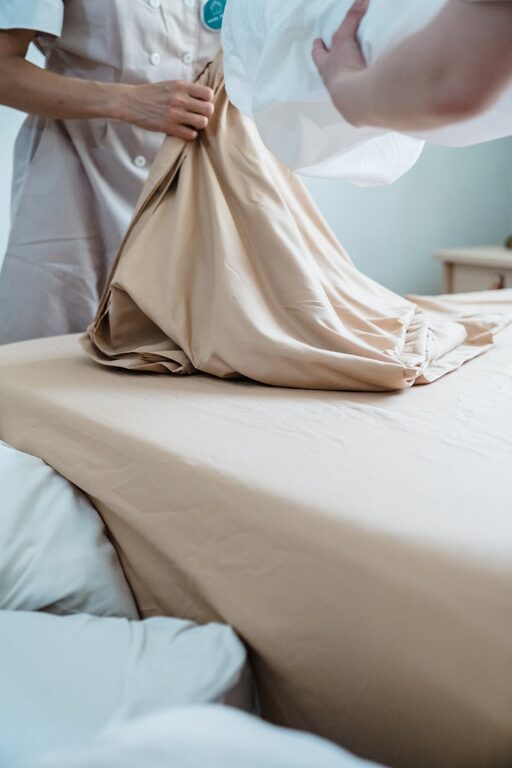
A good night’s sleep starts with comfortable, clean bedding. But even the best-quality sheets and blankets need proper care to stay fresh and cozy over time. Rotating and maintaining your bedding can prevent wear, reduce allergens, and extend its lifespan. In this guide, we’ll cover practical steps on how to rotate and care for bedding properly so your bedroom always feels inviting.
Why Proper Bedding Care Matters
Bedding collects sweat, oils, dust, and skin cells, which can cause odors and wear. Without regular care, sheets and blankets may lose softness, develop stains, or harbor allergens like dust mites. Properly rotating and cleaning bedding helps preserve its texture, color, and freshness. It also reduces the need to replace items frequently, saving money and reducing waste.
How to Rotate Bedding Effectively
Use Multiple Sets of Bedding
The simplest way to rotate bedding is to own at least two or three sets of sheets and pillowcases. This allows you to switch between sets every week or two. Rotating bedding sets helps reduce wear on any one set and gives you time to wash and dry sheets thoroughly.
Rotate Sheets to Different Sides
If you only have one set, flipping and turning the sheets regularly can help balance wear. For example, flip the fitted sheet so the underside faces up when you change the bedding. Rotate the top sheet so different parts experience pressure and body oils.
Rotate Pillows and Duvets
Pillows and duvets collect body heat and moisture. Rotate your pillows side to side and flip them front to back weekly to maintain shape. If your duvet is two-sided, turning it over occasionally can help even out any filling clumping or wear.
Tips for Washing Bedding Properly
Follow Care Labels
Always check the care instructions on your bedding labels before washing. Different fabrics like cotton, linen, or microfiber may require specific water temperatures or washing cycles.
Use Gentle Detergents
Choose mild detergents without harsh chemicals or added fragrances to protect fabric fibers. Avoid bleach unless the care label specifically allows it.
Wash in Warm or Cool Water
Hot water can shrink or damage some fabrics. Warm water is effective for cleaning, and cool water helps preserve colors. Adjust based on your sheets’ fabric type.
Avoid Overloading the Washer
Give your bedding enough room to move freely in the washer. Overloading can prevent thorough cleaning and produce wrinkles.
Dry Thoroughly, But Not Over-Dry
Tumble dry on a low or medium heat setting or line dry if possible. Remove bedding promptly to prevent wrinkles. Over-drying can weaken fibers over time.
Additional Bedding Care Practices
Use Mattress and Pillow Protectors
Protectors shield your mattress and pillows from sweat, spills, and dust mites. They are easier to clean frequently than thicker bedding layers.
Air Out Bedding Often
Hang bedding outside or near an open window when possible to air it out. Fresh air helps reduce odors and moisture buildup.
Spot Clean Stains Promptly
Treat spills or stains as soon as they happen with gentle stain removers or mild soap to prevent permanent marks.
Store Bedding Properly
When not in use, store bedding in a clean, dry place. Use breathable fabric bags instead of plastic to prevent moisture buildup.
When to Replace Bedding
Even with good care, bedding eventually wears out. Signs it’s time to replace include:
– Persistent odors after washing
– Thinning fabric or holes
– Loss of softness and comfort
– Allergic reactions due to dust mites or mold
– Faded colors or fraying edges
Tracking the age of your bedding and inspecting regularly ensures you sleep on fresh materials.
Conclusion
Proper rotation and care of your bedding contribute to a healthier sleep environment and make your linens last longer. By using multiple sets, washing correctly, and maintaining your bedding between washes, you’ll enjoy cozy, fresh sheets night after night. With these simple habits, your bedroom can stay inviting and comfortable for years to come.
